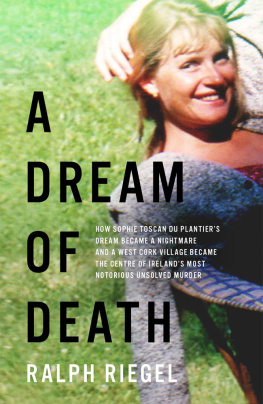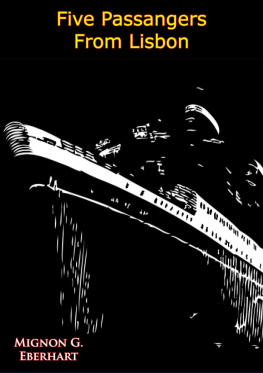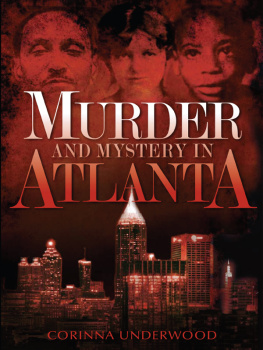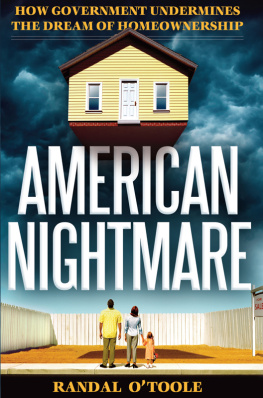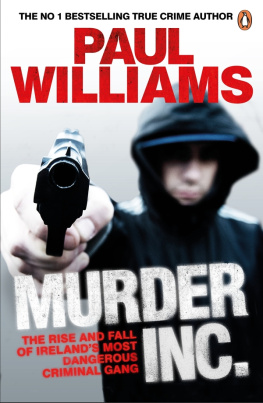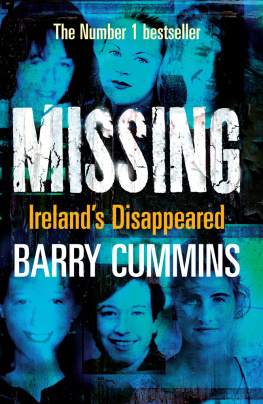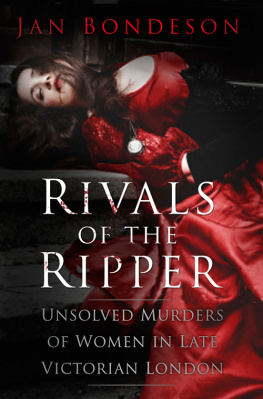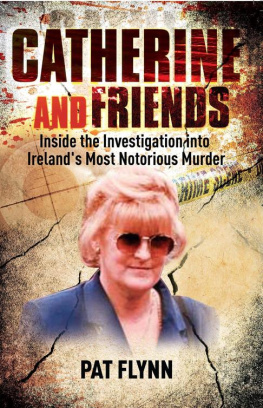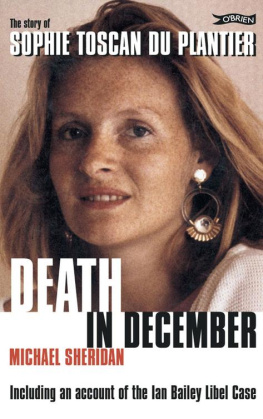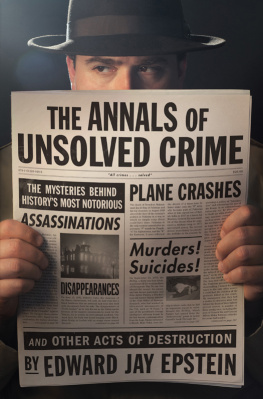

A Dream of Death
I dreamed that one had died in a strange place
Near no accustomed hand,
And they had nailed the boards above her face,
The peasants of that land,
Wondering to lay her in that solitude,
And raised above her mound
A cross they had made out of two bits of wood,
And planted cypress round;
And left her to the indifferent stars above
Until I carved these words:
She was more beautiful than thy first love,
But now lies under boards.
WILLIAM BUTLER YEATS
Contents
INTRODUCTION
T he poetry book lay open in the cottage precisely as she had left it, on the short poem by William Butler Yeats.
Shocked by the savage injuries inflicted on the murdered woman lying in the laneway nearby, the detectives realised that, in the minutes before the attack in which she was battered to death, Sophie Toscan du Plantier had been reading a poem that opened with the lines I dreamed that one had died in a strange place / Near no accustomed hand.
It struck garda as an eerie coincidence that the woman could have been reading these words as her killer walked towards the beautiful isolated cottage on the hillside, illuminated against the dark December sky by the light from the hearth.
***
The brutal killing of Sophie Toscan du Plantier, a beautiful French mother of one, at her holiday home in Toormore, west Cork, just days before Christmas in 1996 has proved to be Irelands highest-profile, most baffling and controversy-stalked murder mystery.
Sophie was attacked at her holiday home just hours before she was due to fly back to France, chased as she tried to flee for her life across a dark mountainside and then viciously battered to death when her killer finally caught her less than 100 metres from her cottage. Her blood-soaked body was left by the roadside. It was a killing almost unique in its brutality, its apparent lack of motive and, crucially, its subsequent lack of eyewitnesses and forensic evidence to identify the killer.
The investigation initially seemed to offer the hope of an early resolution, but it ultimately came to frustrate both the Garda Sochna and Irish prosecutors, not least because of failings and problems with the original probe. Detectives were hampered by the failure to secure any significant breakthrough in terms of key evidence and were also plagued by what can politely be described as bad luck.
Over time, the case threatened to put Ireland and France on a judicial and diplomatic collision course over the failure to prosecute anyone for the murder of the high-profile French film executive. Twenty-three years after her battered body was discovered lying by the Toormore roadside, the investigation into the murder of Sophie Toscan du Plantier remains open.
The killing committed in west Cork resulted in a French investigation, a Paris trial, and ultimately a high-profile prosecution and conviction. Ireland and France again face the minefield of a looming extradition battle and major questions over judicial procedures and the rights of the innocent.
The individual convicted by the non-jury Paris court in May 2019 was British poet and journalist Ian Bailey, who had been twice arrested by garda in connection with the du Plantier investigation despite his vehement protestations of innocence. On both occasions, the journalist was released without charge.
Because of his Paris conviction and an outstanding European Arrest Warrant issued by the French authorities, Mr Bailey has been described by his solicitor as a prisoner in a country called Ireland.
Sophie Toscan du Plantier was an intelligent, vivacious and independent woman who felt a deep attraction to the wild, rugged and windswept landscape of west Cork. It was a place she came to describe as her dream home, and she insisted on sharing the beauty of the Toormore, Schull and Goleen landscape and culture with her family, friends and teenage son.
This is Sophies story.
MURDER
S hortly after 10 a.m. on Monday, 23 December 1996, Shirley Foster was setting off from her home at Toormore in order do some last-minute Christmas shopping in Schull. It was a typical Irish winter morning there was a hint of frost on the ground and, while the morning had been bright and clear, cloud cover threatened rain showers later in the day.
Ms Foster lived on a hillside that boasted dramatic views, with Roaringwater Bay in the distance. Behind the property were spectacular views west towards Dunmanus Bay. All around the house, gorse-covered hills interspersed with rock-studded fields carved over generations tumbled down towards the coast. In summer, Toormore was beautiful and idyllic. In winter, it could be desolate and forbidding.
West Cork communities are used to isolation, but even by local standards this tiny Toormore community was some distance removed from the hubbub of local habitation. At the base of the hill, at the side of the laneway leading from her home towards the main road, Ms Foster noticed what she thought was a bundle of clothes. It was unusual enough to catch her attention. As she slowed to take the left-hand turn, something made her look again and she realised that the object wasnt a bundle of clothes. Rather, it appeared to be a human form lying prone by the gate.
Horrified, she looked again to make sure and was appalled to see that it was a body with obvious bloodstains. She raced back to her home to raise the alarm and notify the garda. She also informed her partner, Alfie Lyons, of the grim discovery. Together, they began a quick check of their neighbours to ensure that everyone was safe and accounted for.
Despite the fact that Clonakilty, Bantry and Skibbereen garda stations were closer, the alert was handled by Bandon Garda Station, the divisional headquarters for west Cork. The sergeant on duty dispatched two uniformed garda to the scene while also alerting detectives and the local superintendent to the serious nature of the call that had just been received.
The first garda patrol car arrived at the isolated scene shortly before 10.40 a.m. The two officers in attendance, Sergeant Ger Prendeville and Garda Bill Byrne, were careful not to contaminate the scene, but they were able to confirm that the alert did involve a dead body. One look was enough to see what a post-mortem would later verify: the individual was female and had been subjected to a brutal and savage attack. This did not look like a tragic road traffic accident or even a livestock incident. Neither garda recognised the deceased on sight.
A careful inspection of the scene indicated that the woman involved had likely died after a desperate struggle. So horrific were the wounds to the body and head that it was not immediately apparent what type of weapon had been used. But a concrete block was lying just two metres away. Both garda noticed, to their horror, what looked like bloodstains on its edges.
The garda also came across apparent bloodstains on a nearby gate and a piece of clothing caught on a barbed-wire fence. They could see that the woman lying in front of them was wearing walking boots. However, she also appeared to be wearing a dressing gown, as if she had been preparing for bed something that many people who later attended the scene thought highly unusual given the distance the body was found from the house. Garda wondered whether the woman had been chased from her home by an intruder. She had probably been living locally because she could not have run or walked very far, dressed as she was on that cold December night.
Next page
